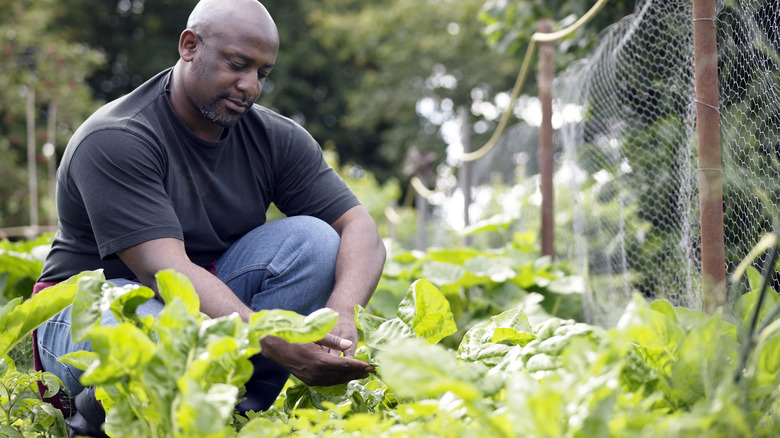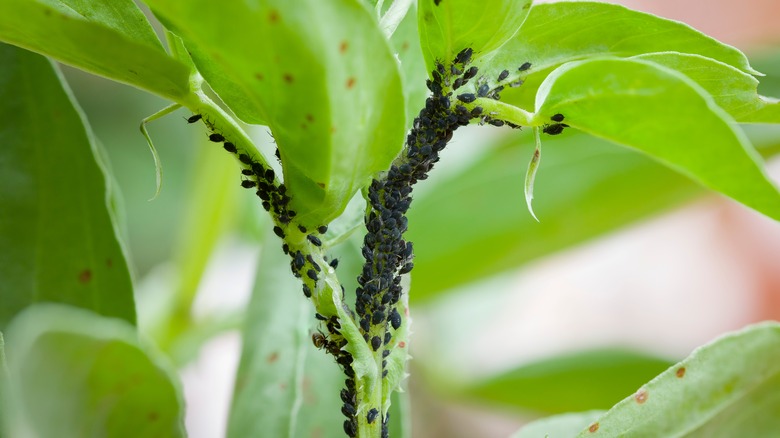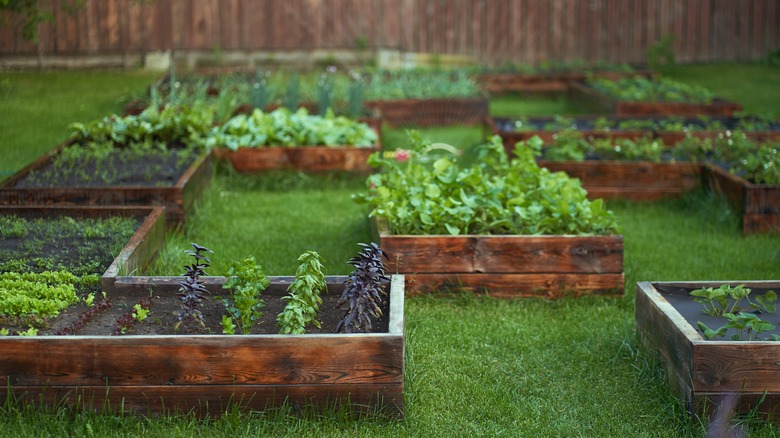How A Sprinkle Of Red Pepper Flakes Can Make Your Garden Thrive
Renowned for its signature heat and frequent use in culinary delights, red pepper holds a lesser-known yet significant role in the gardening world. Red pepper flakes carry the compound capsaicin, which gives red pepper its characteristic fiery kick and forms the basis of its usefulness in the garden — from repelling garden pests and insects to warding off diseases triggered by certain types of fungi. Red pepper flakes are also economical and readily available, providing an environmentally friendly and pesticide-free deterrent to pests.
Pesticide use in gardens can have numerous unintended consequences, making natural substances, such as red pepper, an attractive alternative. Since pesticides do not differentiate between harmful insects and beneficial organisms when used, they may eliminate both targeted pests and beneficial ones. Pesticides can also have far-reaching negative consequences beyond gardens — their toxic chemicals can pose health hazards to pets, children, and adults if not handled safely. Furthermore, they contaminate the groundwater supply, which can impact our drinking water supply quality.
Pest, insect, and fungi deterrent
Red pepper, especially hot varieties like cayenne, has proven effective against various garden pests. The heat produced from red pepper deters small animals like squirrels and rabbits and damage-causing insects, including cabbage looper larvae, spider mites, and spiny bollworm larvae. These insects are repelled when they attempt to consume plant foliage treated with red pepper, creating an unpleasant flavor or sensation discouraging further feeding. However, red pepper is not universally effective against all pests, and its efficacy may vary depending on the specific pest in question.
The capsaicin in red pepper can also create an environment inhospitable to various fungi, reducing the likelihood of fungal infections. This can be particularly beneficial for plants susceptible to diseases like powdery mildew. To create a natural pest and fungi repellent, mix red pepper, garlic, onion, cayenne powder, and water, adding just a bit of dish soap as necessary. Once the mixture is ready, spray it onto plants infested by pests or fungi. Apply the spray consistently after rain or watering occurs to ensure its spicy coating remains on the plant's surfaces.
Economical and environmentally safe
Unlike many commercial pesticides, red pepper flakes offer a cost-effective solution that doesn't strain your budget. Being an everyday cooking staple, red pepper flakes are widely available and easily found in local grocery stores. Numerous online platforms also stock red pepper flakes, offering convenient home delivery options. Red pepper flakes also promote an eco-friendly gardening practice. As natural pest control methods, they ensure safety and harmony within your garden ecosystem without harming plants or wildlife.
If you want to grow your own red peppers, select an area with full sun and well-drained soil. Prepare the ground by adding compost and a balanced organic fertilizer. Sow the seeds indoors 8-10 weeks before the last expected frost, or buy young plants from a nursery. Transplant them outdoors when the threat of frost has passed, and the soil has warmed. Ensure the plants receive at least 1 inch of water per week from rainfall or supplemental watering. Red pepper flakes offer the organic-conscious gardener an excellent way to forego chemical pesticides that could harm their garden's inhabitants and the wider environment.


